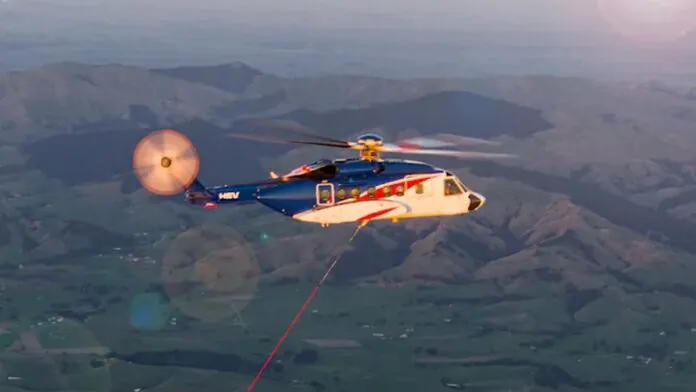© ROOT-NATION.com - Use of content is permitted with a backlink.
Aerospace company Rocket Lab has launched a two-stage Electron launch vehicle from its New Zealand site, previously postponed due to bad weather. As part of this mission, 34 miniature satellites of Rocket Lab’s commercial customers were launched into orbit. But more importantly, for the first time, the company was able to use helicopter-mounted equipment to capture the used first stage of the carrier during its parachute descent.
After three previous launches, when the stage was parachuted and dropped into the ocean for further capture and delivery by ship, the company planned to capture the stage in the air by helicopter. The hook descending from the helicopter captured a parachute, which returned the stage to the ground to avoid contacting salt water.
A successful recovery in the air could allow the company to re-launch this stage later this year, allowing it to increase launch speeds without producing additional accelerators.

Approximately 15 minutes after the launch, the stage came into view of Rocket Lab’s Sikorsky S-92 helicopter. The video from the helicopter showed the hook capturing the parachute to the applause of dispatchers. However, a few minutes later, the webcast was interrupted, suggesting that the helicopter may have lost cargo.
About half an hour later, Rocket Lab confirmed that the helicopter had recovered the used First stage, but then released the accelerator. “After the capture, the pilot noticed that the load characteristics were different from those we observed during the tests,” company spokeswoman Muriel Baker said in a webcast. “At the discretion of the pilot, he unhooked the stage to fall into the water” so that it could be reached by boat, as in the three previous attempts to recover it. Nevertheless, experts called the operation “a monumental step forward in our program to transform Electron into a reusable launch vehicle.”

Speaking to reporters four hours after the takeoff, Peter Beck, CEO of Rocket Lab, said he thought it would be “trivial” for the company to determine why the booster hanging was different from past prototype tests. “We will probably update our simulator to accurately simulate the load, go out and conduct a bunch of tests to work comfortably with the updated load option,” he said.
The launch vehicle gently fell into the ocean and after some time was pulled out by a boat. “Obviously, there are a huge number of steps and equipment that we can reuse,” he said. He did not rule out the possibility of stage’s re-launch. “I still hope you will see this device on the site again.”
Although the attempt to capture the booster attracted attention, the main goal of the mission was to launch 34 small satellites into a 520 km high synchronous orbit, which was done an hour after launch. The 24 satellites were Spacebee satellites from Swarm Technologies, owned by SpaceX, which manages the Internet of Things constellation, and was launched by Spaceflight.

Also launched were three prototype satellites created by E-Space, which will test technology for the future broadband group. Alba Orbital has launched four small satellites for itself and various customers.
You can also help Ukraine fight with Russian occupants via Savelife or via an official page of the National Bank of Ukraine.
Read also:


